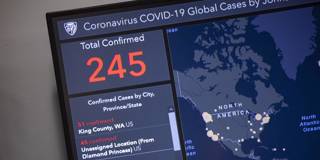The COVID-19 pandemic has highlighted the need for more and better data, and the value of models in informing humanitarian response strategies. The world must now invest in data infrastructure and human capacity in order to get ahead of crises, predict future needs, and trigger responses earlier.
NEW YORK – When the COVID-19 pandemic began in March 2020, Afghanistan had only 300 ventilators and two intensive-care units. Early epidemiological models predicted that the country, with a population of about 38 million, would experience a peak of up to 520,000 cases and 3,900 deaths per day by the beginning of summer. Facing the prospect of ten million cases within a matter of months, aid workers and government officials braced for a public-health catastrophe.
To help decision-makers understand where to focus their limited resources, the United Nations Office for the Coordination of Humanitarian Affairs (OCHA) and The Rockefeller Foundation used actual data for Afghanistan – including COVID-19 infection rates and locations of health-care facilities – to project the number of cases, hospitalizations, and deaths over a four-week period. This more realistic forecast helped officials prepare for a peak in cases and deaths that proved to be flatter and later than other models were projecting. Accurately predicting needs enables a more effective humanitarian response.
But models are only as good as the data on which they rely. And, to prepare for the next crisis, the world needs to obtain and share better data.

NEW YORK – When the COVID-19 pandemic began in March 2020, Afghanistan had only 300 ventilators and two intensive-care units. Early epidemiological models predicted that the country, with a population of about 38 million, would experience a peak of up to 520,000 cases and 3,900 deaths per day by the beginning of summer. Facing the prospect of ten million cases within a matter of months, aid workers and government officials braced for a public-health catastrophe.
To help decision-makers understand where to focus their limited resources, the United Nations Office for the Coordination of Humanitarian Affairs (OCHA) and The Rockefeller Foundation used actual data for Afghanistan – including COVID-19 infection rates and locations of health-care facilities – to project the number of cases, hospitalizations, and deaths over a four-week period. This more realistic forecast helped officials prepare for a peak in cases and deaths that proved to be flatter and later than other models were projecting. Accurately predicting needs enables a more effective humanitarian response.
But models are only as good as the data on which they rely. And, to prepare for the next crisis, the world needs to obtain and share better data.